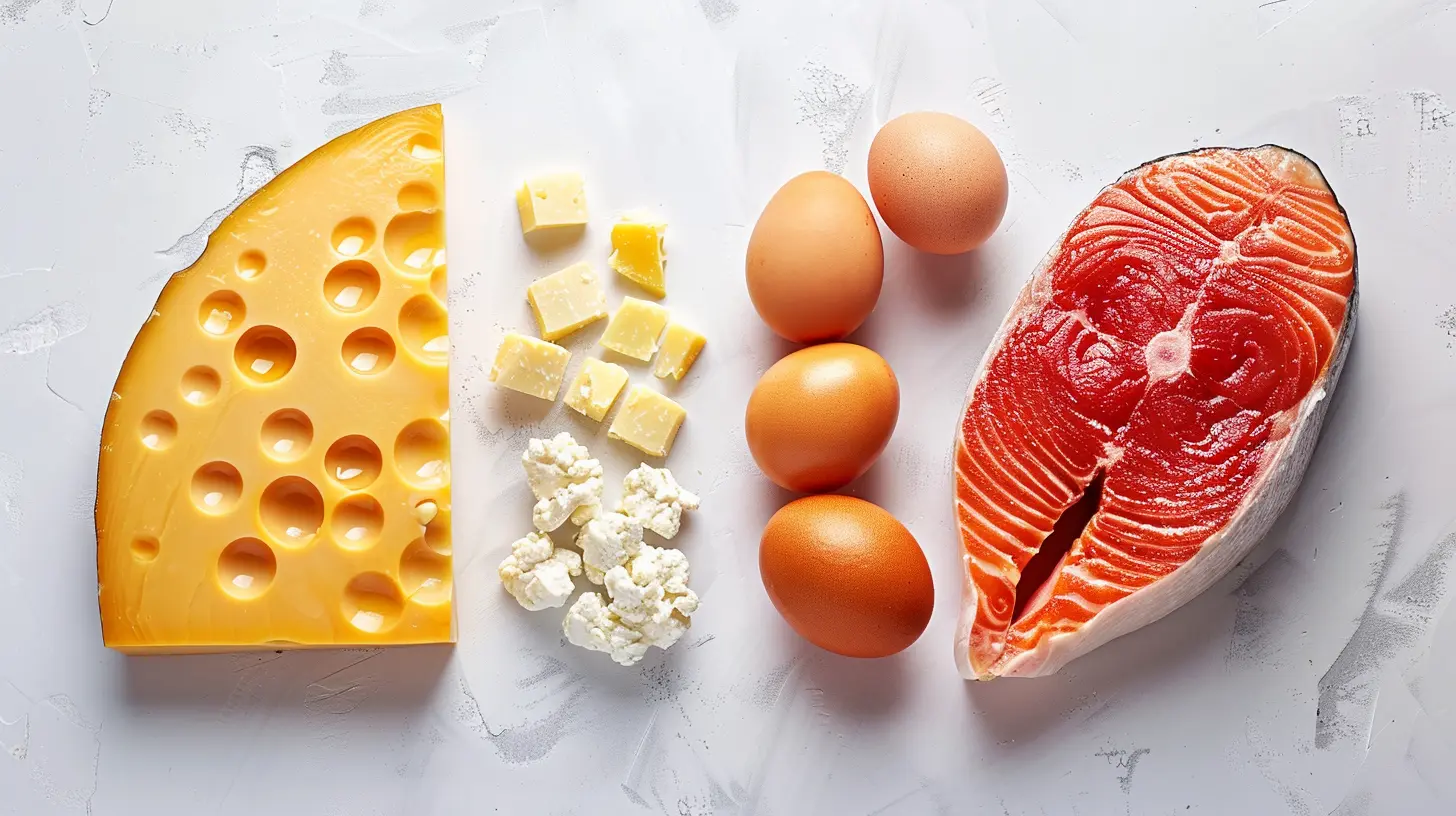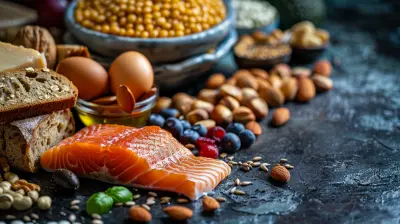Unsaturated vs. Saturated Fats: Which Is Better for You?
14 October 2025
Okay, let’s get real for a second—when it comes to fats, the confusion is real. You’ve probably heard everything from “fat is bad” to “fat is life,” and somewhere in between there’s just a whole lot of what the actual heck. So here we are, breaking it down once and for all: the classic showdown—unsaturated vs. saturated fats.
Which is the hero? Which plays the villain? And is it really that simple? Buckle up because we’re going on a wild ride through the land of lipids—with sass, facts, and zero fluff.
What Even Are Fats, Anyway?
Let’s not pretend we all remember high school biology. Fats, also known as lipids, are one of the three major macronutrients your body needs (alongside carbohydrates and protein). They’re not just there to make your fries crispy—they help absorb vitamins, insulate your body, and keep your skin glowing like a glazed donut.But not all fats are created equal. Some are doing your body a solid, and others… well, they’re throwing wrenches in your metabolic machinery.
The Fat Family Breakdown
Before we dive into the epic face-off, meet the squad:- Saturated Fats
Solid at room temperature. Think butter, cheese, lard. Comes mostly from animal products (though coconut and palm oil are plant-based exceptions).
- Unsaturated Fats
Liquid at room temperature. Split into monounsaturated and polyunsaturated categories. Found in foods like olive oil, avocados, nuts, and fatty fish.
- Trans Fats (The Actual Villain)
Artificially created and banned in many countries. Let’s not even pretend they’re okay—they’re gone, roasted, canceled.
So now that we've set the scene, let’s dive deeper into the two stars of today’s showdown.
Saturated Fats: The Controversial Classic
Saturated fats have been riding the “bad guy” train for decades. For years, health experts blamed them for everything from heart disease to clogged arteries. And yeah, there's a bit of truth to that.Where You’ll Find 'Em:
- Red meat (steak, burgers, bacon—yum, but risky)- Full-fat dairy (cream, whole milk, cheese)
- Butter and ghee
- Coconut and palm oil
What They Do in Your Body:
Saturated fats tend to increase levels of LDL cholesterol (aka the “bad” kind). High LDL can lead to plaque buildup in arteries, which—surprise!—can increase your risk of heart disease and stroke.But here’s the plot twist: not all saturated fats act the same way. Recent research suggests that some saturated fats (like those in coconut oil) may not be as evil as we once thought. So, are they totally bad? Not exactly. But moderation is key. Don’t go slathering everything in butter just yet.
Unsaturated Fats: The Golden Child
Now let’s talk about the ones that get a gold star from nutritionists: unsaturated fats. These guys are the smooth operators of the fat world—literally, because they're liquid at room temperature and keep things flowing well inside your body.Two Types of Unsaturated Fats:
1. Monounsaturated Fats (MUFAs)Found in: olives, olive oil, avocados, peanuts, almonds
Benefits: Boost heart health, improve insulin sensitivity, support weight loss
2. Polyunsaturated Fats (PUFAs)
Found in: fatty fish (salmon, mackerel), flaxseeds, walnuts, sunflower oil
Benefits: Reduce inflammation, lower LDL cholesterol, support brain function
Say Hello to Omega-3s and Omega-6s
These are types of polyunsaturated fats, and while both are essential, balance is everything. Most people get too much omega-6 (from processed oils) and not enough omega-3 (from fish and flax). That imbalance? It could lead to inflammation, which is like the root of every chronic disease.Unsaturated vs. Saturated Fats: Face-Off!
Let’s settle this with a no-BS comparison. Think of it like your favorite reality show—here’s how they stack up.| Characteristic | Saturated Fats | Unsaturated Fats |
|---------------------------|--------------------|----------------------|
| State at Room Temp | Solid | Liquid |
| Source | Animal products + tropical oils | Plant-based oils, nuts, seeds, fish |
| Effect on Cholesterol | Raises LDL (bad) | Lowers LDL, raises HDL (good) |
| Heart Health | Riskier, in excess | Protective |
| Inflammation | Can increase | Generally reduces |
| Cooking Stability | High (good for frying) | Medium (some oils unstable at high heats) |
So what’s the verdict? Unsaturated fats win by a landslide in terms of overall health benefits. Saturated fats can be part of a healthy diet—but only as a side character, not the main lead.
What About the Keto and Paleo Hype?
Great question. If you’ve dipped a toe into the world of keto or paleo, you’ve probably seen saturated fats making a comeback—and with confidence.These diets often promote butter, bacon, and coconut oil because they’re low-carb and high-fat. And truth is, some people do thrive on high-fat diets. But that doesn’t mean you should go full bacon-wrapped everything without thinking twice.
A high-fat diet still needs the right kind of fats. Even in keto-world, unsaturated fats (like olive oil and avocado) are your BFFs. Saturated fats? Think of them like glitter—fun in small doses but way too much can be messy.
How Much Fat Should You Actually Eat?
Here’s some straight talk: you need fat in your diet. Our brains are literally made of fat. Hormones? Built from fat. Without fat, you're just a hangry mess with brittle hair and dry skin.But balance is queen. According to most health guidelines:
- Fat should make up about 20–35% of your daily calories
- Saturated fat should stay below 10% of your daily calories
- Unsaturated fats can take up the rest (go wild—ish)
Want an easy rule of thumb? If it comes from a plant or swims in the ocean, you’re probably good to go.
How to Make Smart Fat Choices Like a Pro
Okay, now that your brain is overflowing with fat facts, let’s put it into practice. Here are some no-nonsense tips to up your healthy-fat game:1. Swap the Butter
Use olive oil instead of butter in cooking. It’s heart-friendly and adds flavor. Plus, it’s basically liquid gold.2. Go Nuts (Literally)
Snack on a handful of almonds or walnuts. Nuts are nature’s pre-packaged healthy fats. Just watch the portion—calories add up fast.3. Embrace the Avocado
Avocados are creamy, dreamy, and loaded with monounsaturated fats. Smear it on toast, toss it in salads, or eat it with a spoon. No shame.4. Say Yes to Fish
Aim for fatty fish like salmon or mackerel 2–3 times a week. Omega-3s? Check. Brain food? Double check.5. Read Labels Like a Spy
Look for “partially hydrogenated oils”—that’s code for trans fats, and they’re your worst enemy.Don’t Demonize Fat—Just Get Smart About It
Let’s stop blaming fat for everything and instead understand it. Not all fats are evil, and in fact, some are downright essential. The key takeaway?👉 Unsaturated fats = your body’s BFF
👉 Saturated fats = okay in small doses
👉 Trans fats = hard no
Your body isn’t a garbage disposal. What you put in shows up on the outside—your energy, skin, mood, and yes, even that morning bloat. So stock up on the good stuff and treat your body like royalty, not a test lab.
Because babe, your health is always worth the upgrade.
Final Thoughts
Look, food is more than fuel—it's culture, it's comfort, it's joy. And fats? They make food taste amazing. You don’t have to fear them, just be smarter about choosing them.Unsaturated fats are the Beyoncé of the fat world—powerful, reliable, and always on point. Saturated fats? More like the drama queen friend you don’t see every day but still love in small doses.
Balance them wisely, and you’ll be glowing from the inside out.
all images in this post were generated using AI tools
Category:
Healthy FatsAuthor:

Laurie Barlow
Discussion
rate this article
1 comments
Astralis Wilson
Saturated fats are like that friend who never takes the hint—great in small doses but best kept at a distance. Unsaturated fats? They're your healthy BFF, ready to support your goals without the guilt. Choose wisely!
October 24, 2025 at 2:45 AM


